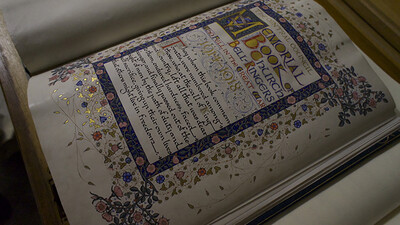
London
The Great Paul that adorns the St. Paul’s Cathedral in London is the product of the John Taylor & Co Bell Foundry. John Taylor invented a new way of bell-tuning that paid special attention to the harmonic complexity of the overtones produced by bells. Before this innovation, bell-tuning was achieved by simply chipping away parts of the surfaces of the bell, which were crude and inaccurate. The foundry’s history was also intertwined with the history of warfare. Two of the family’s descendants perished on the battlefields of the Great War, and a great number of memorial carillons across the UK and the US was cast by John Taylor & Co. One such example is the War Memorial Carillons at Queens Park in Loughborough, which are sounded between 1pm - 2pm on Thursdays and Sundays in the summer months.
The foundry keeps an excellent archive that recorded the inscriptions on all of bells produced by the foundry since 1930. In many cases inscriptions on bells give detail of the donors that patronized the casting of the bell, but in the second half of the 1940s right through to the 1950s a great number of bells bore inscriptions that paid tribute to those who’d fallen in the war.
My final destination in the UK before departing for Germany is the Canterbury Cathedral in Kent. The cathedral is home to the ship’s bell that served the HMS Canterbury, a C-class light cruiser of the Royal Navy, which participated in one of the toughest naval battles of the First World War. Every weekday at 11am, the ship’s bell is rung, and a page on the book of remembrance is turned.
I started reading Anne Frank’s diary again. Something that I’d completely missed in my previous reading: the Westertoren tower bell that the Annex residents would have heard every hour on the hour, until it was broken sometime in 1942. In isolation, the bell punctuated Anne’s time in confinement and made the experience a little more bearable.
To listen to other recordings, visit http://soundcloud.com/samsonyoung/sets/for-whom-the-bell-tolls-london2


